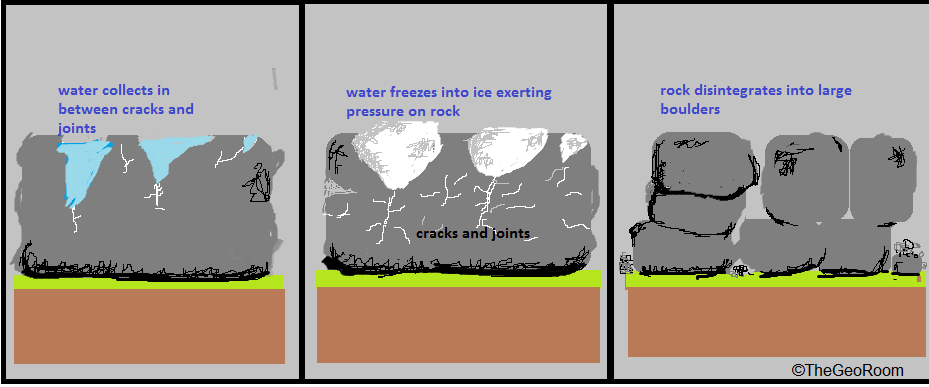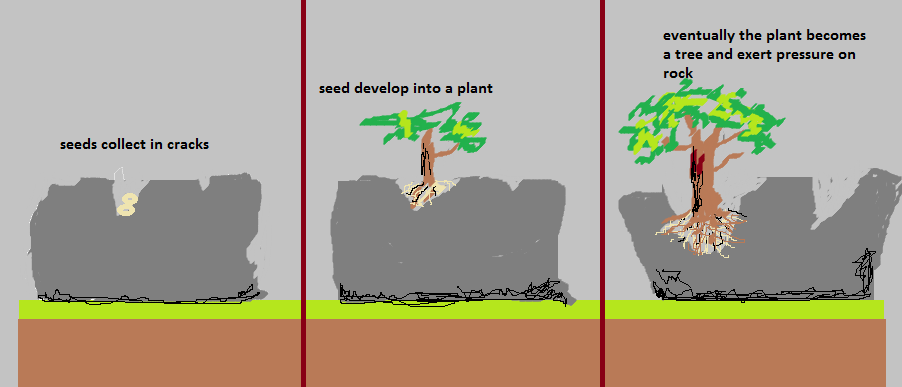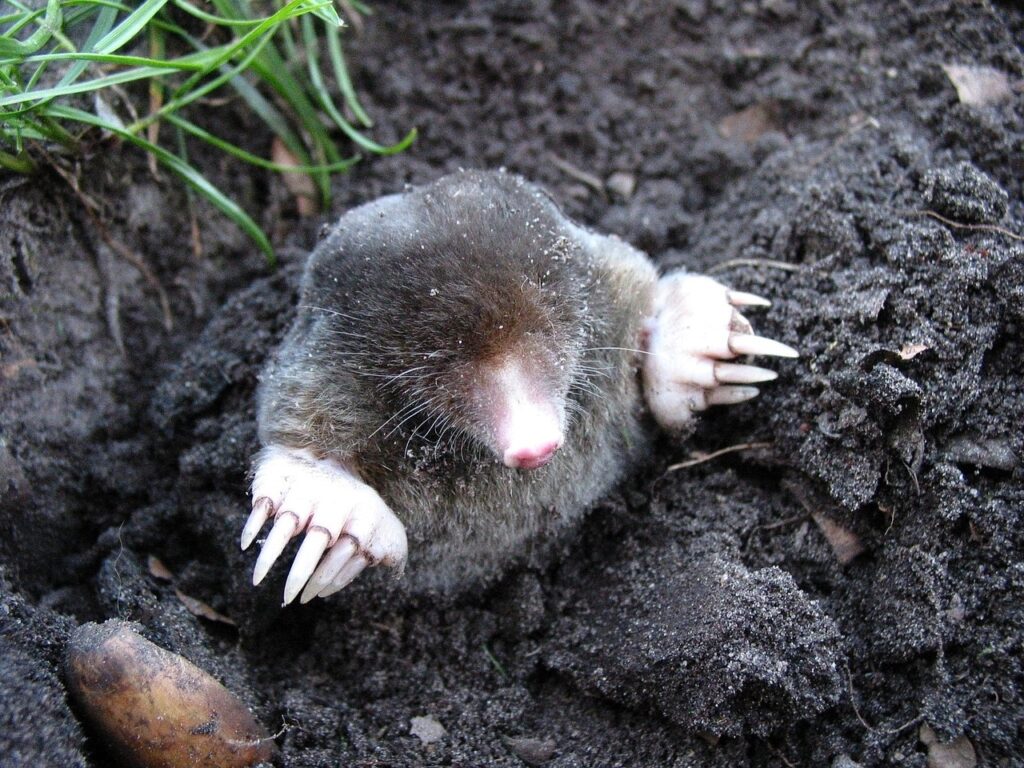Most (all) physical weathering processes involves the building up of stresses which eventually crumbles and disintegrate the rock. The end products created by most physical weathering processes are rock blocks or granules.
In contrast, chemical weathering usually creates residual clay as the end product When describing physical weathering or any other weathering process remember the following:
- The process itself
- location where that particular weathering mostly dominates
- the end product or landforms produced
- type of rock the weathering process is most dominate
Exfoliation/Insolation Weathering/Onion Peeling
Exfoliation mainly dominates in arid regions where high diurnal (difference between high and low) temperatures exists. Because many rocks (such as the igneous type) are poor conductors of heat, exfoliation mainly operates on the outer layer of the rock.
On granite, for example, micas and quartz act as reflectors of insolation because of their crystal light appearance, thus warms up slowly than feldspars which are generally darker. During the day rocks are exposed to high amounts of insolation causing the minerals in them to swell at different rates.
At night rapid terrestrial radiation leaves the surface very cold and the minerals (rock) contract. This process occurs many times creating stresses within the rock thus sometimes called thermal fatigue. The rock eventually gives up and the top layer starts to fracture and then crumbles similarly like how an onion peels off in layers.
The fallen flakes accumulate near the parent rock as debris leaving the rock in a spheroidal dome shape called an Exfoliation Dome. Insolation from sun is not the only factor causing expansion, heat from fires also play a significant role in exfoliation.


Freeze Thaw/Frost Action
Liquid collects in between cracks and freezes if temperatures reaches freezing point. The liquid, now in a solid state (ice), requires more space therefore exerts intense pressure against the rock. The process can repeat several times before the rock breaks down.
Freeze thaw is most common in cold regions where alternate freezing and thawing cycles takes place. The end product of freeze thaw is usually large rectangular broken boulders.


Pressure Release/ Unloading

Igneous rocks such as granite are formed by the solidification of magma deep down where the rock is under intense pressure from the rock and debris above. When these rocks are exposed to the surface by erosion or uplift, the intense pressure is released, and the rock starts developing cracks parallel to the surface. Sheets of rock break away along the cracks more or less like exfoliation.

Retreating glacial ice can release the rock from the pressure it was subjected under. Pressures can be released from mining bursts such as open cast
Salt Crystallization
Salt water when evaporated leaves crystals of salts behind. Intense heating of these salts causes them to swell (expand) therefore generating stresses within rock and disintegrate it.
Salt crystallisation occurs mainly in areas where excessive evaporation takes place or along coasts where ocean salt water may collect in between cracks.
The end product can be granules or blocks of rock. Salt crystallization is also responsible for the formation of rock holes called honeycombs or cave like depressions called tafoni.


Wetting and Drying
Rocks such as mudstone or shale have clay minerals that have the ability to absorb water. When water is absorbed the clay minerals expand whereas upon evaporation the minerals contract. The process repeats several times causing stresses within the rock and eventually breaks down.
Plant Root Action

Seeds can be carried into rock cracks by wind or water. When the seeds are constantly supplied with water they germinate and become a plant.
The plant can grow to become a tree and the roots, because they need more space, start to exert pressure against the rock and breaks it apart.
Plant root action is more common in the tropics or subtropical areas where there’s abundant vegetation and rainfall.

Animal Action

Burrowing animals like worms, termites and mole rates can dislodge soil and rock particles by digging underground. Overtime this can disintegrate the entire rock altogether.
